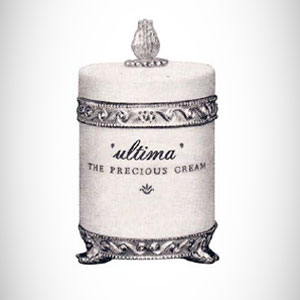 BEAUTY
BEAUTY
Sunscreen vs Sunblock What's the Difference? Which One Is Better?
Do you often struggle to differentiate between sunscreen and sunblock? Although both protect your skin from the sun, there are significant distinctions between them.
Everyone needs to protect their skin from the sun. Long-term overexposure can lead to skin problems, including sunburn, premature aging, and skin cancer. The easiest way to protect your skin from the sun is to use sunscreen or sunblock.
Although they look similar, sunscreen and sunblock are two different products. One difference is the term for these types of sunscreen. Usually, "sunscreen" refers to sun protection with chemical-based (organic) UV filters, while "sunblock" refers to sun protection with physical-based (inorganic) UV filters. Additionally, the differences between sunscreen and sunblock can be seen in their ingredients, how they work, how they are applied, and the final results after use.
Check out the differences between sunscreen and sunblock below:
Ingredients
By checking the ingredients listed on the packaging, you can determine whether a product is classified as sunscreen or sunblock. Sunscreen typically contains chemical compounds like avobenzone, oxybenzone, or para-aminobenzoic acid (PABA) that absorb sunlight. On the other hand, sunblock usually contains zinc oxide or titanium dioxide, which reflects UV rays from the skin.
Texture
In addition to ingredients, the difference between sunscreen and sunblock can be seen from the texture. Sunscreen has a lighter texture, absorbs quickly on the skin, and does not leave a white cast.
Sunblock has a thicker texture, feels heavy, tends to be sticky, and usually leaves a white cast on the face. Sunblock is generally safer for all skin types as it does not clog pores. It works due to the main active ingredients, titanium dioxide and zinc oxide, which form a protective layer to reflect UV rays and prevent them from penetrating the skin.
How it works
The difference between sunscreen and sunblock can also be seen by how they perform on the skin. Sunscreen uses active ingredients that absorb UV rays to prevent and block them from entering the deepest layers of the skin. Sunscreen should also be applied on the face 15-20 minutes before going outside or engaging in activities for optimal effectiveness.
Sunblock, on the other hand, acts like a shield, blocking and reflecting UV rays from the skin. The good news is that it can work immediately after application.
However, if you're planning to do outdoor activities, reapply every 2-3 hours, whether it's sunscreen or sunblock.
Final result
You can also recognize the difference between sunscreen and sunblock by the finish after application. Sunscreen barely leaves any marks because of its transparent color and light texture. The skin also stays comfortable even when covered with makeup. On the contrary, sunblock takes longer to sink in and often leaves white cast on the face.
So, Which One Is Better?
Both sunscreen and sunblock effectively protect the skin. To prevent irritation, choose a sun protection that is suitable for your skin type. Chemical sunscreens can be a good option if you're looking for a lightweight and comfortable sun protection for daily use.
If you have sensitive skin, it's best to use sunblock or physical sunscreen. Certain minerals, such as zinc oxide, can help reduce redness, relieve acne, and have anti-inflammatory and antibacterial effects. It can also control excess oil production, reduce the risk of irritation, and prevent clogged pores.
However, if you're looking for a sunscreen that is safe for sensitive skin, has a lightweight texture, and is comfortable for everyday use, a hybrid sunscreen may be your best option. A hybrid sunscreen is an innovation that combines chemical and physical properties of sun protection. In other words, hybrid sunscreens work by absorbing UV rays and creating a shield on the skin, providing a more optimal protection.

One hybrid sunscreen recommendation that you can try is Hydra Botanic Sun Protection SPF 50 PA++++ from ULTIMA II. This product combines the advantages of chemical and physical sunscreens. It can provide good protection for sensitive skin like a physical sunscreen but still provides a light and non-sticky texture like a chemical sunscreen. Hydra Botanic Sun Protection SPF 50 PA++++ will also work optimally in protecting the skin from UV rays (infrared and blue light).
Plus, Aloe Vera Extract is an anti-inflammatory that can help soothe sunburn and reduce facial redness. Additionally, Chamomile Extract calms inflamed skin and aids in its regeneration.
So, there's no more confusion about choosing sunscreen and sunblock. Let’s start using sun protection more diligently before any outdoor activities!


 Timeless Ultimate Beauty
Timeless Ultimate Beauty Our Quest
Our Quest